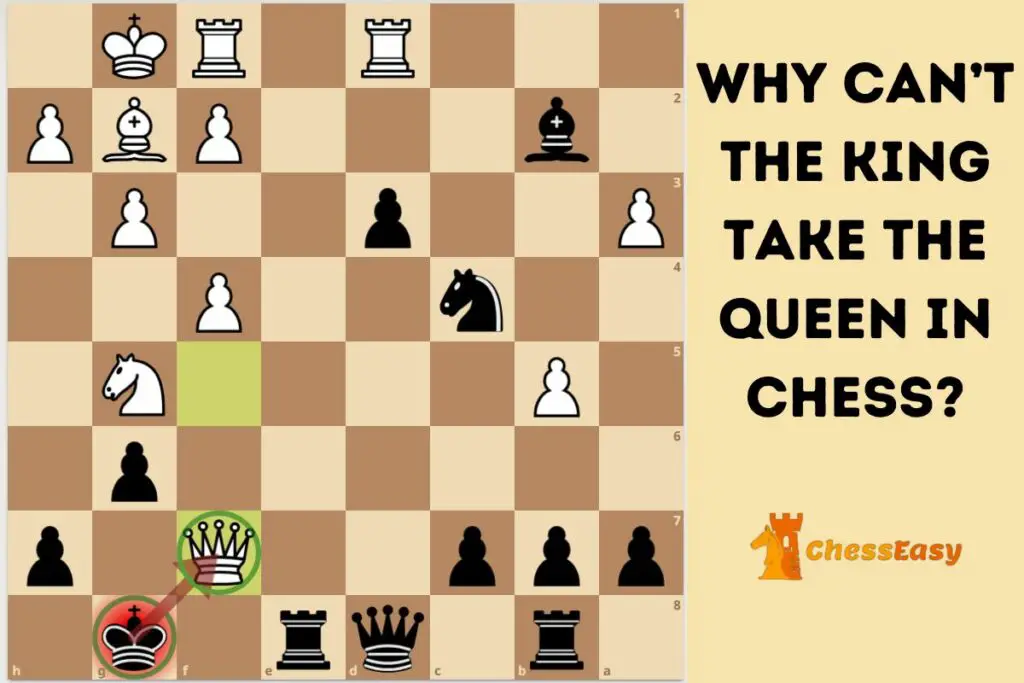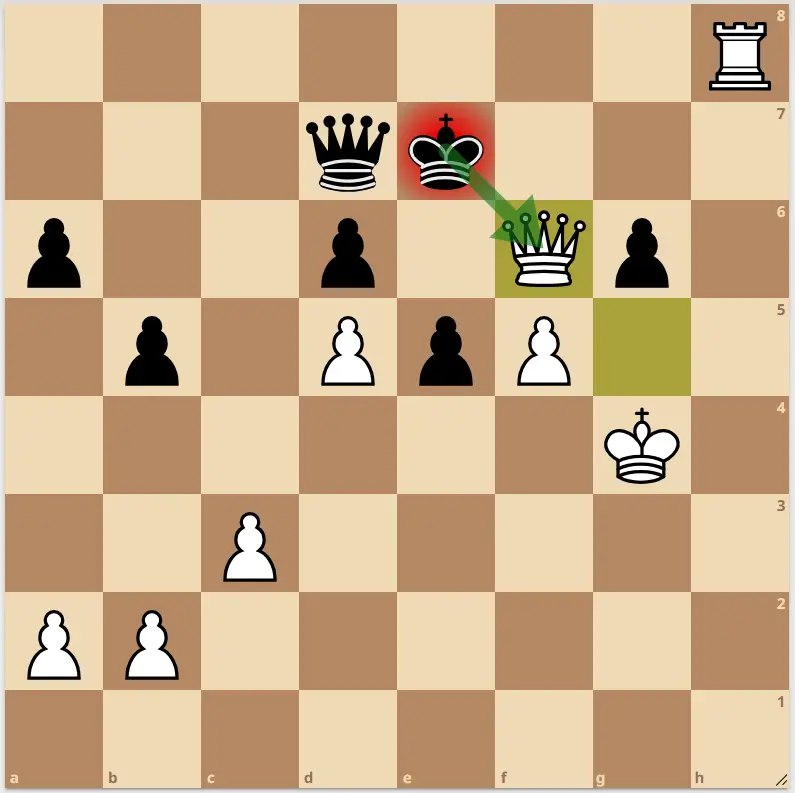
In the intricate world of chess, every piece has a unique role to play on the 64-square battlefield. Among the 16 pieces each player commands, none are more vital than the king and queen.
The king symbolizes the essence of the game with its safety being the paramount objective. The queen, on the other hand, is the most versatile and powerful piece.
When considering the role and movement capabilities of these pieces, one question arises: why can’t the king take the queen in chess?
The king can’t take the queen in most scenarios in chess because this could put the king in check, which defies the fundamental rules of the game. The only time the king can capture the queen is if the queen is unprotected and can be captured without putting the king at risk of check.
Keep on reading as we break down the roles of the king and queen in chess. when the king can take a powerful piece like the queen off the board, and what happens if the king and queen are the only pieces remaining?
What Is the Role of the King and Queen Pieces in Chess?
The two most critical pieces in chess are the king and queen. Here’s a simple comparison to help you understand how they move and their primary roles in the game.
| King | Queen | |
|---|---|---|
| Description | The king is the most crucial piece in chess, as the primary objective of the game is to protect it. | The queen is the most versatile and powerful piece on the board. |
| Movement | It can move only one square in any direction: horizontally, vertically, or diagonally as long as the square is not threatened by an enemy piece, which means it has a limited but essential range of mobility. | It can move any number of squares in any direction: horizontally, vertically, or diagonally, which makes it capable of covering vast areas of the board and controlling key squares. |
| Role | The primary role of the king is defense. It must avoid threats and checkmate (being in a position where it cannot escape capture) at all costs. | The primary role of the queen is offense and board control, as it can threaten multiple pieces simultaneously, putting pressure on the opponent. |
Why Can’t the King Take the Queen in Chess?
The king cannot take the queen in most scenarios due to a fundamental rule of the game and the primary objective of chess, which is safeguarding the king from checkmate.
One of the central rules in chess is that a player cannot make a move that would put their own king in check, meaning a move that exposes the king to a direct threat of capture.
So, if the king were to capture the opponent’s queen, it might result in the king moving closer to the center of the board and potentially into harm’s way.
Additionally, since the king has very limited mobility and the queen can move any number of squares in any direction, the king would be at a significant disadvantage due to the queen’s greater mobility ability to control large areas of the board.
When Can the King Take the Queen in Chess?
The king can take the queen in chess when the following conditions are met:
- The Queen is Unprotected: The most common scenario is when the opponent’s queen is not defended by any other piece. In this case, the king can move to the square occupied by the enemy queen and capture it. This usually happens due to a blunder of the opponent or as part of a mating pattern.
- No Check Resulting: Capturing the queen must not put the capturing king into check. If the king takes the queen and subsequently becomes vulnerable to capture on the next move, it’s an illegal move. The player must make a move that ensures the king’s safety.
- No Threat of Immediate check or Checkmate: Capturing the queen must not result in a situation where the opponent can deliver an immediate checkmate on their next move.

In the above image, it is possible to take the queen with the king even though it is a check. This is because the queen is not protected by any other piece on the board.
Can the King Take Other Pieces in Chess?
The king in chess can capture other pieces just like any other piece on the board as long as it doesn’t move into check. Basically, the same rules we’ve discussed about taking a queen apply to taking any other piece.
However, it’s generally not advisable to use the king for offensive purposes, as the king’s capture range is very limited compared to other pieces, as it can only move one square in any direction.
Additionally, if the king moves to capture a piece at any point in the game before it castles, it loses the ability to castle for the remainder of the game.
What Happens if the King and Queen are the Only Remaining Pieces on the Board?
When the king and queen are the only remaining pieces on the chessboard, it often leads to a complex and challenging endgame scenario with significant strategic implications.
In this scenario, the player with the queen has a substantial advantage. With proper play, the player can often checkmate the opponent’s lone king. This is known as the “queen and king versus king” checkmate, and it’s relatively straightforward to achieve with careful maneuvering.
However, if the player with the queen makes mistakes or fails to utilize the queen effectively, it is possible for the game to end in a stalemate, where neither side can make a legal move, resulting in a draw.
Stalemates can occur if the player with the queen is too aggressive and allows the opponent’s king to escape to a square where it’s not in check but also does not have any moves (and no other pieces has any moves, so the player with the troubled king basically has no moves).
If neither player makes progress for a specific number of moves (usually 50 moves without a capture or pawn move), the game will be declared a draw.
Conclusion
In conclusion, the king cannot usually capture the queen in chess because it would violate the rules of self-preservation, compromise the king’s safety, and potentially undermine the game’s primary objective of checkmating the opponent’s king.
However, there is an exceptional scenario in chess where the king can capture the queen. This occurs when the opponent’s queen is left unprotected or undefended, and capturing it does not put the capturing king in check.
Such an opportunity to capture the opponent’s queen can be a game-changing move, but it is relatively rare due to the risk involved.
